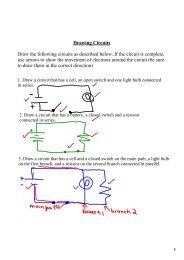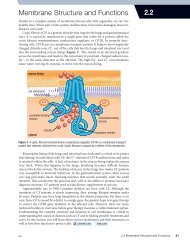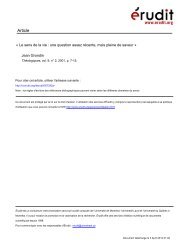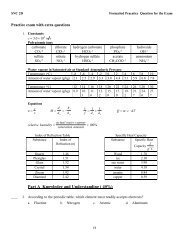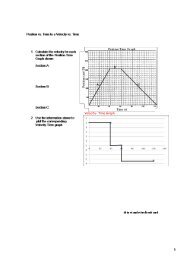Biotechnological Tools and Techniques
Biotechnological Tools and Techniques
Biotechnological Tools and Techniques
Create successful ePaper yourself
Turn your PDF publications into a flip-book with our unique Google optimized e-Paper software.
<strong>Biotechnological</strong> <strong>Tools</strong> <strong>and</strong> <strong>Techniques</strong><br />
Molecular Geneticists use many different types of tools in order to aid in the<br />
investigation of genetic disorders, alteration of genetic makeup of many<br />
organisms, or anaylze the samples collected in criminal investigations.<br />
Restriction Endonucleases (restriction enzymes)<br />
These are enzymes that cleave (or cut) the double str<strong>and</strong>ed DNA molecule into fragments at specific<br />
points.<br />
There are many different types of restriction enzymes<br />
formed by various Bacteria that can be used to cut the DNA<br />
str<strong>and</strong>s at different locations. Bacteria use this ability to<br />
protect themselves from invading viruses by chopping<br />
them into pieces when they enter. These diagrams show<br />
EcoRI restriction e<br />
<br />
Each type of restriction enzyme will recognize a particular set of<br />
nucleotides. This is known as the recognition site.<br />
Restriction enzymes are named by the following things:<br />
HindIII<br />
H represents genus Haemophilus<br />
in-‐represents species influenza<br />
d represents the strain Rd<br />
III the third restriction enzyme isolated from this strain
Methylases<br />
These are specific enzymes that add a methyl (CH 3 ) group to the recognition<br />
site to prevent a restriction enzyme from attaching <strong>and</strong> cleaving a DNA<br />
fragment into pieces.<br />
DNA Ligase<br />
This enzyme is used by the DNA to join fragments together. It is used during DNA replication as well as<br />
after restriction enzymes cut apart different pieces of DNA.<br />
Gel Electrophoresis<br />
Once pieces of DNA have been cut out of the full<br />
DNA molecule, they can be separated <strong>and</strong> sorted on<br />
the basis of size.<br />
DNA is negatively charged because of the phosphate<br />
group.<br />
The larger the piece of DNA the greater the size <strong>and</strong><br />
negativity of the molecule.<br />
Electrodes are hooked up to the sample <strong>and</strong> the<br />
negatively charged particles move toward the<br />
positive + electrode. The smaller the piece, the<br />
farther it will move.<br />
Each sample that is gathered will be analyzed using restriction enzymes (cut into<br />
pieces) <strong>and</strong> then run through gel electrophoresis.<br />
Samples that match or people who are related will have matching fragments of<br />
DNA.<br />
Who is guilty of this crime?
Plasmids<br />
Plasmids are small circular piece of DNA that can exit <strong>and</strong> enter<br />
bacterial cells.<br />
Bacteria cells can incorporate Plasmids, <strong>and</strong> express the proteins<br />
that are coded for in the plasmids.<br />
Insulin creation<br />
Originally diabetic patients required either insulin harvested<br />
from cadaver pancreases or insulin from bovine or pig source.<br />
Once Plasmids were discovered bacterial plasmids were<br />
inserted with the human insulin gene. The bacteria created the<br />
insulin through Protein synthesis. The human insulin is then<br />
harvested by chemical processes.<br />
Transformation<br />
The introduction of foreign DNA usually as a plasmid or virus, into a bacterial cell. Plasmids can be used<br />
as vectors (a method of transferring DNA into a host cell). If a bacterium will accept a plasmid it is called<br />
a Competent Cell. Most cells can be made to be competent by chemically inducing with Calcium<br />
Chloride.




